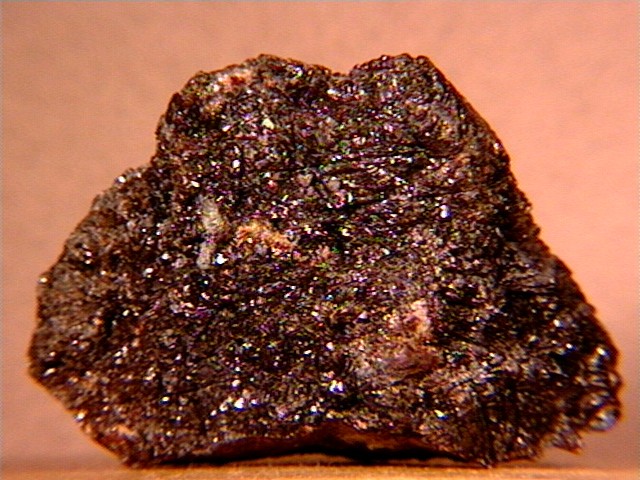
شکست رکورد سختی الماس
با ابداع ماده ای دست ساز از نانو مواد که سختی بیشتری برخوردار است، سنگ پر ارزش الماس که لقب سخت ترین ماده جهان را به خود اختصاص داده بود، عنوان خود را واگذار کرد. اکنون با کشف ماده طبیعی جدیدی که ارز 65 درصد سختی بالاتر برخوردار است، الماس ها را به تدریج به دست فراموشی سپرده خواهند شد. پژوهشگران دانشگاه شانگهای به منظور مطالعه درباره این ماده جدید ، به شبیه سازی اتم های دو ماده که می توانند ساختاری سخت تر از الماس داشته باشند، اقدام کردند. نیترو 6 ضلعی برون (wurtzite boron nitride) از اولین موادی است که ساختار شبیه به الماس دارد، اما از اتم های متفاوتی ساخته شده است.ماده دوم الماس شش ضلعی (minearal lonsdaleite) نام دارد که مانند الماس از اتم های کربن اما در ساختار متفاوت تولید شده است. به دلیل این که میزان کمی از مواد در طبیعت و در محیط های آزمایشگاهی تولید می شوند، تاکنون کسی به قدرت بالای این مواد پی نبرده بود . شبیه سازی دانشمندان نشان می دهد ماده اول تا 18 درصد و ماده دوم تا 8 درصد بیشتر از الماس توانایی تحمل فشار را داشته و سخت ترند. در صورت تایید نتایج این شبیه سازی در آزمایش های فیزیکی هر دو به عنوان سخت ترین مواد جهان سناسیی خواهند شد. به دلیل کمیاب بودن این مواد تهیه میزان مناسب برای انجام آزمایش ها ، کاری مشکل خواهند بود. با این حال ، در صورت تایید ویژگی های این دو نیترید شش ضلعی برون (wurtzite boron nitride) نسبت به ماده دیگر از فواید بیشتری برخوردار خواهد بود، زیرا در برابر اکسیژن در حرارت بالا نسبت به الماس ، از مقاومت بیشتری برخوردار است. این خصوصیت استفاده از این ماده را به عنوان تیغه ابزار برش و حفاری بسیار مناسب می سازد و عملکرد این تجهیزات را بهبود می بخشد.

Scientists at Shanghai Jiao Tong University and University of Nevada, Las Vegas had created materials which are harder than diamond. Diamonds were thought as the hardest material in this world; however scientists converted certain materials with compressive pressure under indenter which were transformed into materials harder than diamond. The two materials were wurtzite boron nitride (w-BN) and lonsdaleite (hexagonal diamond). It was said that lonsdaleite was 50% harder than w-BN. The compressive pressure caused the structural phase transformation and atomic bonds flipping to transform the materials. The finding was published in Physical Review Letters. – kuku
Diamond will always be a girl’s best friend, but it may soon lose favour with industrial drillers.
The gemstone lost its title of the “world’s hardest material” to man-made nanomaterials some time ago. Now a rare natural substance looks likely to leave them all far behind – at 58% harder than diamond.
Zicheng Pan at Shanghai Jiao Tong University and colleagues simulated how atoms in two substances believed to have promise as very hard materials would respond to the stress of a finely tipped probe pushing down on them.
Extreme conditions
The first, wurtzite boron nitride has a similar structure to diamond, but is made up of different atoms.
 The second, the mineral lonsdaleite, or hexagonal diamond is made from carbon atoms just like diamond, but they are arranged in a different shape.
The second, the mineral lonsdaleite, or hexagonal diamond is made from carbon atoms just like diamond, but they are arranged in a different shape.
Only small amounts of wurtzite boron nitride and lonsdaleite exist naturally or have been made in the lab so until now no one had realised their superior strength. The simulation showed that wurtzide boron nitride would withstand 18% more stress than diamond, and lonsdaleite 58% more. If the results are confirmed with physical experiments, both materials would be far harder than any substance ever measured.
Doing those tests won’t be easy, though. Because both are rare in nature, a way is needed to make enough of either of them to test the prediction.
Rare mineral lonsdaleite is sometimes formed when meteorites containing graphite hit Earth, while wurtzite boron nitride is formed during volcanic eruptions that produce very high temperatures and pressures.
Flexible friend
If confirmed, however, wurtzite boron nitride may turn out most useful of the two, because it is stable in oxygen at higher temperatures than diamond. This makes it ideal to place on the tips of cutting and drilling tools operating at high temperatures, or as corrosion resistant films c on the surface of a space vehicle, for example.
Paradoxically, wurtzite boron nitride’s hardness appears to come from the flexibility of the bonds between the atoms that make it up. When the material is stressed some bonds re-orientate themselves by about 90º to relieve the tension.
Although diamond undergoes a similar process, something about the structure of wurtzite boron nitride makes it nearly 80% stronger after the process takes place, says study co-author Changfeng Chen at the University of Nevada, Las Vegas, an ability diamond does not have.
:: موضوعات مرتبط:
گالری عکس ,
کانی و سنگ ,
اخبار ,
,
:: بازدید از این مطلب : 1266
|
امتیاز مطلب : 135
|
تعداد امتیازدهندگان : 37
|
مجموع امتیاز : 37

